Can new competition create new opportunities?
Editor’s note: This article is from the micro-channel public number “grape game” (ID: youxiputao) , Author: according to light flow.
The original title “ 4 of the top 10 best-selling, domestic mobile games have broken the Japanese market? No, it’s far from it 》
The domestic mobile game has ushered in a new breakthrough in Japan.
Just last week, with the launch of “Dragon Fantasy” and “Idol Fantasy Festival Music”, with the products such as “Wild Action”, “Place Girl” and “Underworld” that are already at the forefront of the list, as well as Fifth Personality, for many consecutive days, domestic mobile games have grabbed four positions within the Top 10 of the Japanese App Store best-selling list. There is a lot of anti-guest momentum.
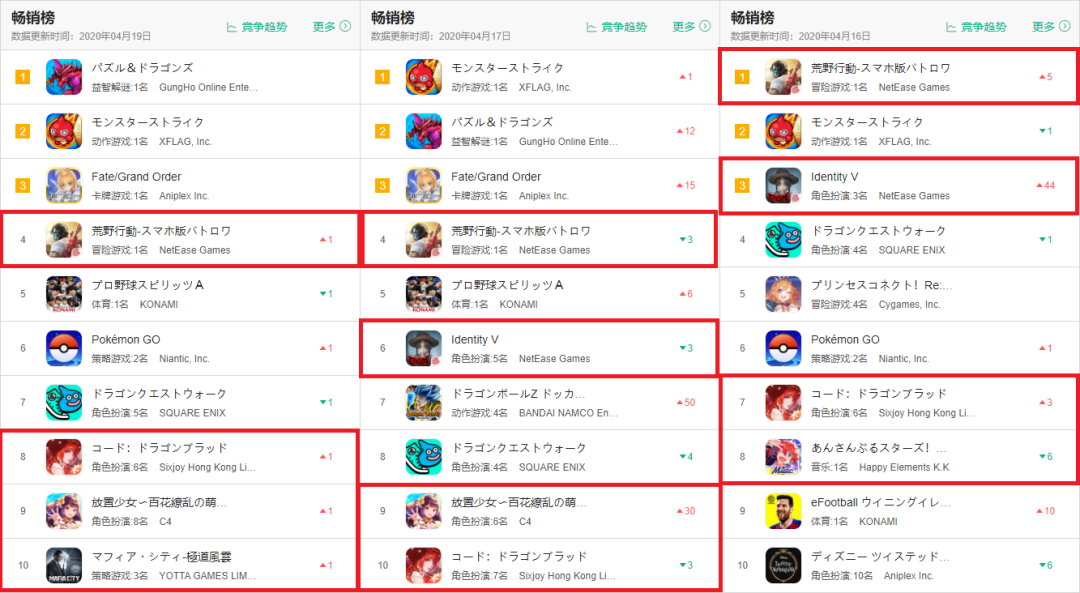
Since the opening of the domestic mobile game in 2017 to the Japanese market, more and more products have begun to enter the market, and now it seems that it has reached a node of large-scale march.
However, after carefully reviewing the performance of domestic games in Japan, Grape King found that in more than 100 days since the opening of 2020, there were 6 new products that hit the top 10 of the Japanese free list, and finally reached the top of the best-selling list. There are only 3 models.
This means that half of new domestic products have failed to achieve outstanding online results in Japan. The threshold of competition also affects Japan’s domestic products. Since 2020, a total of 26 new products in the Japanese market have hit the top of the free list. Only 8 models can finally stand in the top 20 of the best-selling list.
Behind the high elimination rate is the still brutal competition in the Japanese market. However, in these successful or failed products, we can also see the changes taking place in the Japanese market.
A new product that can rise up must have a trick
Judging from the phenomenon of the domestic game’s collective dominance of the day zone, several new products have indeed contributed.
After screening the products of domestic manufacturers that have entered the Top 20 of the App Store best-selling list in Japan in 2020, you can find that a total of 16This product has reached this baseline. Among them, three new products launched this year, “Ark of Tomorrow” released by Yosung, “Idol Dream Festival Music” launched by the Le Element Japan team, and “Dragon Fantasy” released by Tencent have all entered the Top 10.
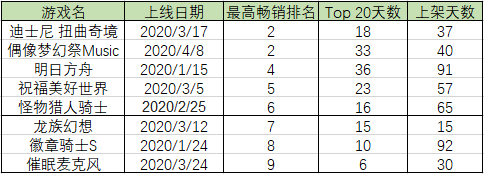
Strictly speaking, the new work of Le Element is produced under the leadership of the local team in Japan. Basically, its attributes are closer to the products under the Japanese idea (for the discussion of this product, I will put it back a bit later) ). So, the only domestic new products that have the potential to break into the potential are “Tomorrow’s Ark” and “Dragon Fantasy”, which are also very special games in China.
Everyone knows “Ark of Tomorrow” well, but in Japan, this product hasn’t shown the explosive power it had at home. Judging from the trend of the list, after hitting the high position several times, this product slowly began to shift to the situation of conventional card drawing games in Japan: the results fluctuated as the card pool activity was updated.

In my opinion, the theme of “Ark of Tomorrow” can be said to be new in the country, but in Japan, themes such as eschatology and resistance are discussed in Japanese RPGs. In such an environment, this game is rare Some particularities. At the same time, this game is different from the previous “Blue Line” released by Yosung, and there is not a large enough market vacancy waiting to be filled.

“Ark of Tomorrow”
So this result can be said to be the result of “Tomorrow’s Ark”. The long-term trend is more meaningful for this product than the previous outbreak.
“Dragon Fantasy” is the next generation MMO produced in China by UE4,The position of this product in China is more subtle. The balance between the traditional system and the novel visual effects is different for domestic players. However, in the Japanese market, the performance of domestic gameplay and UE4, plus the style of the Dragon family, are relatively new.

“Dragon Fantasy”
At the same time, when Tencent promoted, it also used more money-burning resources at This is what I mentioned in the previous article, which I mentioned in the previous article, but it ’s more effective. In fact, the “general”, “influential”, and “many people’s attention and discussion” that this product creates for Japanese users are highly linked to the social environment, security, and trust that local users need.
With both bonuses, it ’s easy to win Japanese users. At present, since the launch of “Dragon Fantasy”, it has not fallen out of the best-selling Top 20. It has been stable at about 10, and it may be resident in the Japanese market in the future.
In the Japanese market, old products are becoming more popular
Compared with new products, old products that are already based in Japan are more worth mentioning.
Exclude new products, and calculate the stickiness of each game in the top 20 best-selling games. You can find that the sooner the product is launched, the easier it will be to gain a foothold in Japan, even if the product is not an innovative product, an epoch-making product that we often say in our country. High-quality products.

viscosity = Top20 days in the list / total number of days in the year to date, and the total number of days since Xinyou ’s online visit has been calculated as a reference < / p>
The first is NetEase’s “Wild Action”. We have analyzed this game many times. Interested readers can read
Interpretation of these products can be started from many angles, but here I just want to mention one commonality between them: the sense of companionship.
As we all know, Japanese users can show a very high degree of dependence on a single product. This trend may be a performance engraved in their genes. In games, they often show high activity and ARPU, but for foreign products, it is often difficult for them to invest directly. And if a product has a good reputation in their social circle, or meets some of their demands for the game, it is easy to get recognition and followers from Japanese players.
Neither Netease’s “Wild Action” or the other two “Underworld” and “Place Girl” are products that are just one step ahead of the game. On the contrary, they use enough time for each. To build trust and dependence with Japanese users. Specifically, it is to accompany players with a series of advertising promotion, operation strategies, and online and offline activities.

“Operation of the Wild” early ranking trends
From this point of view, if a product passes the quality level, there is a combination or complementarity with the Japanese market. If it is invested for a long time, there is a high probability that the product will be rewarded in the Japanese market. This is a seemingly unprofitable deal, but I think in 2017, no one expected that these three games would be so stable in Japan.
It is worth mentioning that NetEase is very sensitive to this model. After figuring out the way for Japanese users to accept it, it launched a series of its products early in the local area, “Foreshore”, “Fifth Personality”, “Tomorrow Afterwards, after almost verifying the direction of playfulness in China, they immediately hit the Japanese market. Now that they have accumulated, these products can find their place within the Top 20.

Now “The Fifth Personality” can also hit the best-selling Top 3
Extensively, the Japanese market can be said to be a very special area that accumulates. When the accumulation reaches a certain threshold, the product will show irreplaceability. As long as the official does not make mistakes, there will always be a group of loyal users following him. . It is also a good understanding of the reason why “PUBGM” lost to “Wild Action” in Japan. On the one hand, this product is late, on the other hand, the latter is far closer to the inner feelings of Japanese users.
Just like “Wisdom Dragon” cannot be replaced by “Monster Pinball”, the two cannot be replaced by “FGO”, but they both coexist, and the latter want to dig out their own space in the Japanese market. Yes, but it will be very difficult to defeat a product that has been successful before.
From this perspective, products such as “PUBGM”, “CODM”, and “Awakening of All Nations” do overseas from the perspective of the global market, rather than products that operate exclusively for the Japanese market, and the rise of performance will face more thresholds. At the same time, their opponents are constantly raising this threshold.
Counterattack on Japan with the second element, not as beautiful as you think
Before “Azur Lane” followed by “Ark of Tomorrow” supporting the facade, maybe everyone will think that the domestically produced second elementThe success rate of the game in Japan is very high, but as far as this year’s situation is concerned, the opposite is true.
From the beginning of this year to the present, there are three products that are linked to the direction of the second yuan for domestic games, and they are launched on the Japanese market. They are “VGAME”, “Blue Oath” and “Soul Art Academy”. It was released by Japanese manufacturer Enish. The Horcrux Academy was released by Station B. The Blue Covenant was released independently by the Babel era.

Just for now, it is a pity that although these products have once been briefly high on the App Store free list, they have not achieved too good results on the best-selling list, only “Blue Oath” Once briefly entered the top 30 of the best-selling list.

The reasons behind this are bound to be very multi-faceted, such as issuing resources, choosing strategies, the main crowd, the influence of special periods, the schedule of key payment activities has not arrived, etc.
Of course, there is also a possibility that the performance of these products in the domestic market has not reached the level that can approach the “Ark of Tomorrow” level, so in the more demanding Japanese market, they rely on the market The play style and product model may not be able to support higher achievements.
If you broaden your perspective, it is not just these new products. In the past, the domestic core-to-two-dimensional game that took root in the Japanese market has not been so good in 2020. “Break 3” and “Azur Lane” entered the Top 20 only 1 and 3 days respectively, relying on the momentum of key card pools and activities.

The core-to-two-dimensional game is often different from the product of “Place Girls” that only sells two-dimensional pictures. The revenue within one month is highly dependent on certain draws and single-pay content. If you can get enough income, then this score is also acceptable.
If Japanese users do n’t wait to see the domestically produced secondary yuan, what are the reasons? I think this answer may be somewhat similar to the situation of “Ark of Tomorrow”. ACG content is seen by Japanese users a lot. Those less authentic Japanese secondary yuan, and no special market factors blessing, may be more difficult for Japanese users to attract attention.
Taking “Blue Oath” as an example, this product has been praised by some users in the Japanese market, because its 3D modeling quality is very fine, but at the same time, some players lamented “It is a pity to use this gameplay” . Good skin is a threshold, and how to use it is another matter. This is probably the key to the collapse of many domestic secondary games in Japan.
Behind the enemy, the Japanese market has also changed
As mentioned earlier, as of this year, the Japanese market has entered the Top 10 free list of products, which has reached 26 models, of which more than half of the products can be rushed to the Top 1 position, almost all products are left in the Top 3 name.

However, contrary to this situation, only 8 products on the best-selling list can be ranked in the Top 20. Take a look at the new products that have been eliminated, and you can find that traditional IP adaptation products are very weak.
A series of old IP’s declines are very tragic, “Inuyasha” fell to the best-selling 600, and “EVA” fell to the 500th place. There are also new IPs such as “Sage of the Sage”, which fell to more than 1,100.
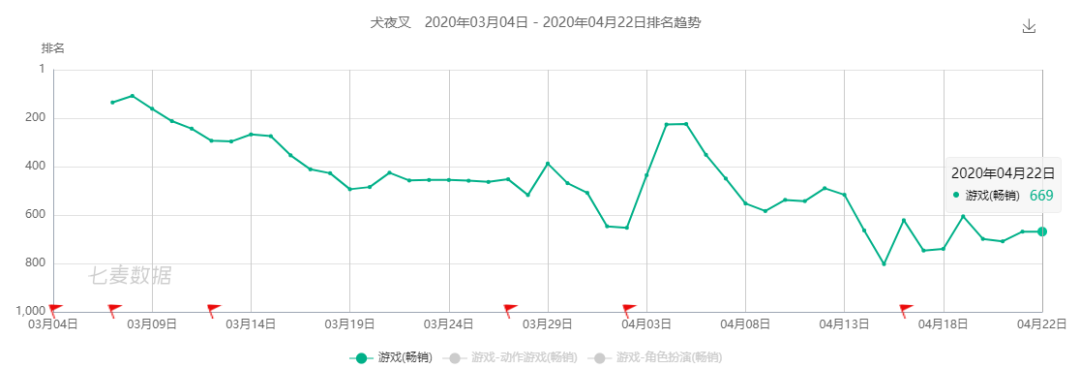
It can be said that except for “Blessings for a Beautiful World” which can be stable in the forefront of long-term sales, and “Monster Hunter Knight” has not slid badly, the rest of the IP-modified products are almost one-sided declines. To a certain extent, the routine that the Japanese market has long relied on for survival, IP-based gameplay of changing games to monetize, is gradually failing.

“Monster Hunter Knight”
Among them, only products like “Blessings for a Beautiful World” have learned the set of “Princess Connection” on the gameplay, and borrowed the mature gameplay system under the premise of heavy packaging to emphasize the content and weak social atmosphere. , Circle fans to be successful. Otherwise, like “Monster Hunter Knight”, after consuming a wave of fan popularity, it is facing a downward trend.
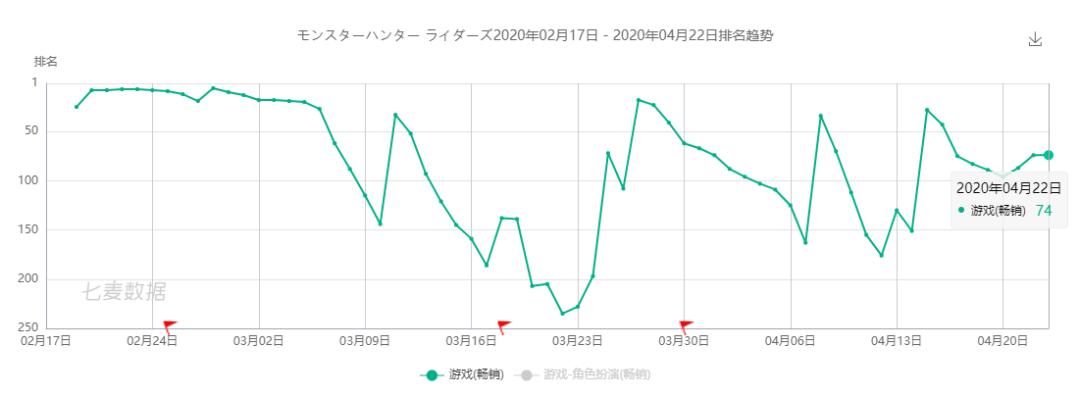
In the face of the dilemma that new domestic products are difficult to exert and overseas masterpieces continue to invade, the Japanese market has also begun to show some new trends. On the one hand, it ’s just mentioned, borrowing products from different gameplays, such as ” Blessings for a better world “, some Japanese products begin to focus on packaging rather than gameplay in order to obtain a specific user group.
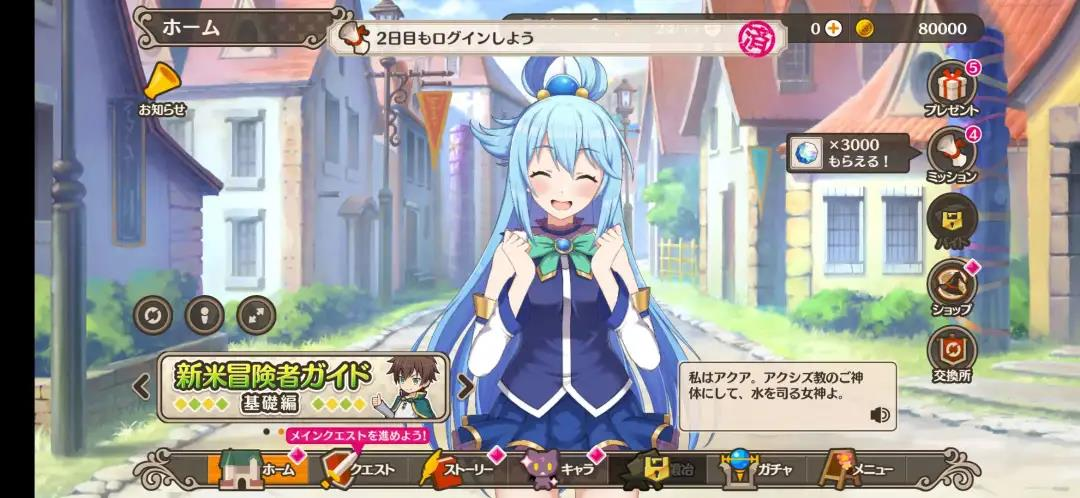
“Blessings for a Beautiful World”
On the other hand, Japanese local products began to focus on subdivision strategies to tap the market potential of themes and new people. The most representative ones are “Disney Twisted Wonderland” released by Aniplex and “Idol Dream Festival Music” by Le Element.
Disneyland Twisted Wonderland is not the first Japanese product to be slanted in the subject matter. Previously, “Death Alice” has verified this direction, but “Disneyland Twisted Wonderland” also blends with women. Elements. The deep digging of the theme can be seen as an extreme of the differentiation of the Japanese market products. The purpose is still to awaken users who are tired of dealing with various dazzling themes.

And “Idol Dream Festival Music” is special, it focuses on Japan’s developed idol culture and market, as well as a large group of women to users, and iterative gameplay based on its own IP. Similarly, the hypnotic microphone is also a product aimed at similar people.
However, the market for “Idol Dream Festival Music” is significantly wider. The success of its predecessor has guaranteed the potential of the new work. In recent years, popular music games in Japan have educated users and made iterative gameplay for female users. Can be established.
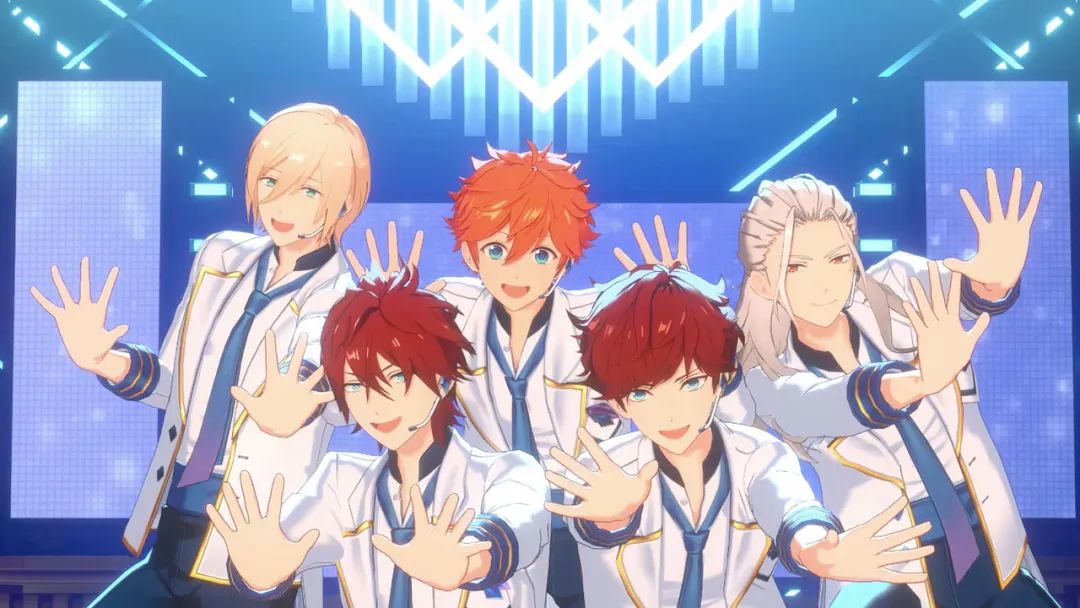
This is equivalent to doing your own secondary development in a well-trained market. This is also the reason why this product cannot be discussed together with general domestic games and domestic two-dimensional games.
Japan ’s open door is not a refusal for visitors
No matter which direction the Japanese manufacturers develop in, it will eventually bring a longer tug of war. Because in the final analysis, to make extreme differentiation or to accumulate emotions, it is ultimately a unique experience that attracts users for a long time and even binds the users’ emotional demands. In the end, it is back to the long-term companionship of Japanese manufacturers.
At the same time, this front has also been pulled away by some leading domestic manufacturers. The early entry into the Japanese market is not about how much money is earned, but how much Japanese users have conquered. Once the user ’s mind is settled, it is difficult for the latecomers to shake them.

It is true that from the perspective of success rate, domestic products hitting the Japanese market this year have achieved a success rate of 50% (based on top 20 sales only), which is much higher than the overall success rate of 31% in Japan Too much. But these successful products almost have endorsements that cannot be copied.
The Japanese market is far from being so gentle. Its door was opened early, allowing us to hit the top of the list at random three years ago. However, the Japanese market is not without rejection. Now that three years have passed, there are no more products eligible to hit the top of the list.










